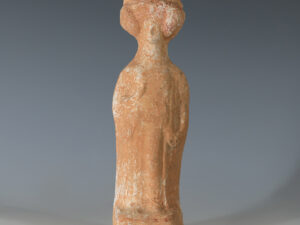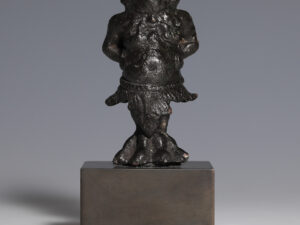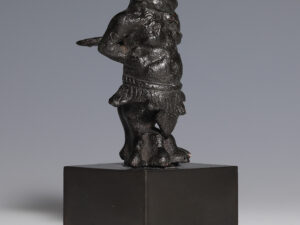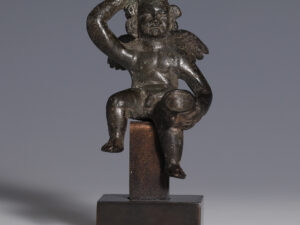Grotesques as an artistic motif were popularised during the Hellenistic period and feature in a variety of Roman art. The grotesque paintings on the walls of Nero’s Domus Aurea are perhaps one of the most famous examples of the tradition, but an abundance of bronze figurines, such as this fine piece, have been widely documented. There is much Hellenistic influence in these portrayals, seen in the attention to anatomy and theatrical, dynamic poses. The figures are assumed to have been apotropaic in nature, warding off evil spirits or bad health, and some were likely worn as charms or amulets on the person.
To discover more about protective emblems in antiquity, please visit our relevant blog post: Apotropaic Art
























